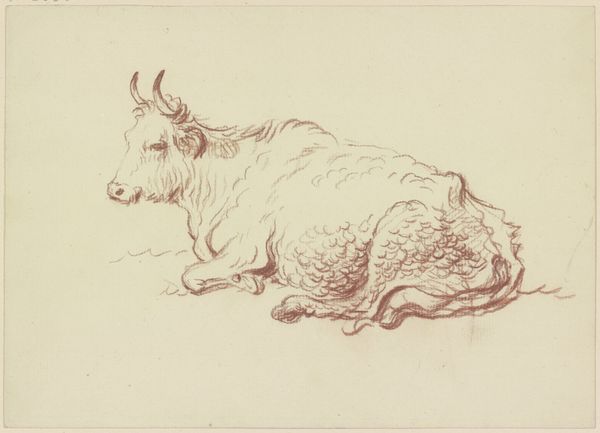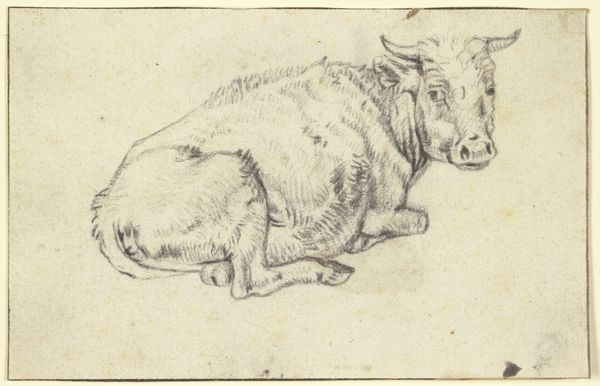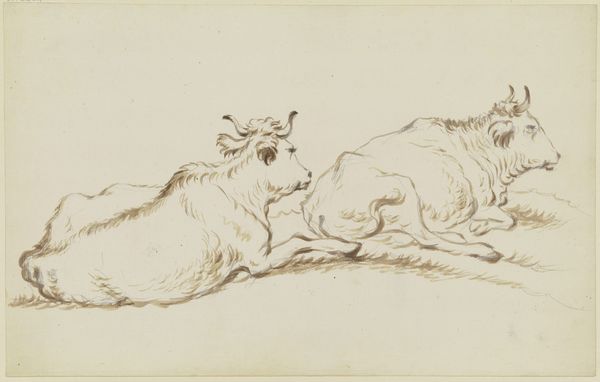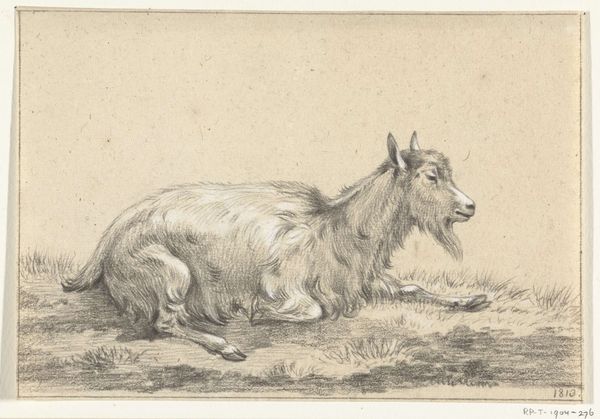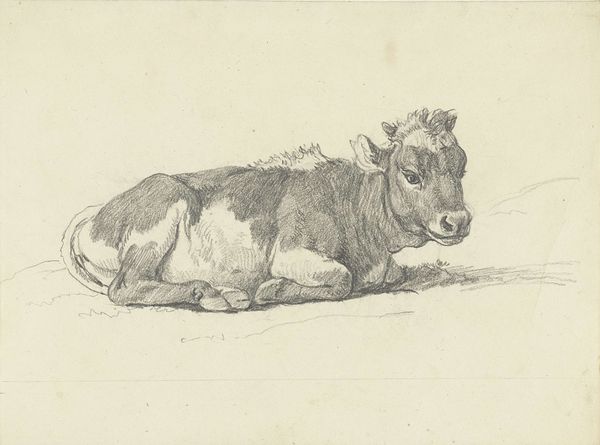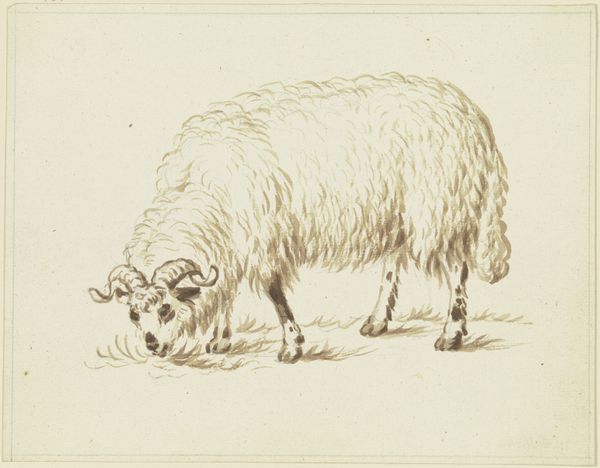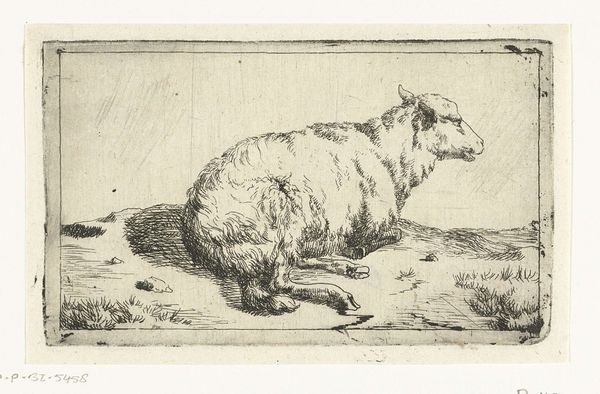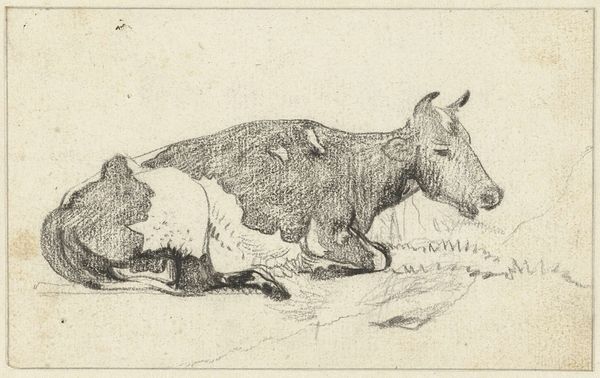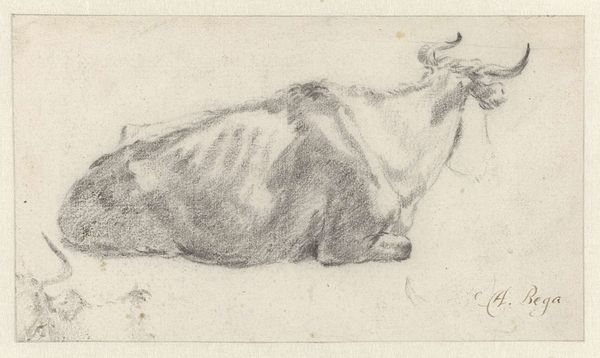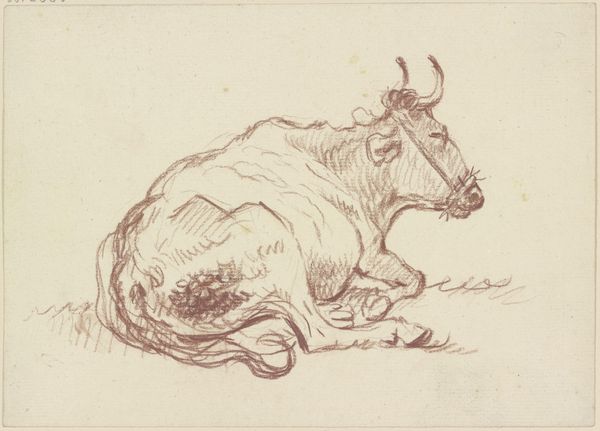
drawing, pencil
#
drawing
#
baroque
#
animal
#
landscape
#
figuration
#
pencil drawing
#
pencil
#
realism
Dimensions: overall: 33.1 x 48.3 cm (13 1/16 x 19 in.)
Copyright: National Gallery of Art: CC0 1.0
Johann Heinrich Roos created this ink on paper drawing of a bull sleeping sometime in the 17th century. Roos, working in Germany, was known for his animal drawings, and this one reflects the cultural context of his time. During the 17th century, the rise of agrarian societies and the importance of livestock in the European economy meant that animals like this bull were not just beasts of burden, but symbols of prosperity and power. Consider the way Roos has rendered the animal: it is both powerful and docile, a beast at rest. How does this image speak to the relationship between humans and animals in the 17th century? Is it a celebration of pastoral life, or does it hint at the exploitation inherent in agricultural practices? To fully understand the work, we might consult agricultural records, literature, and other visual representations of animals from the same period. By examining these resources, we can understand the complex social and economic forces that shaped not only Roos’s drawing, but also the very perception of animals in 17th-century Europe.
Comments
No comments
Be the first to comment and join the conversation on the ultimate creative platform.

